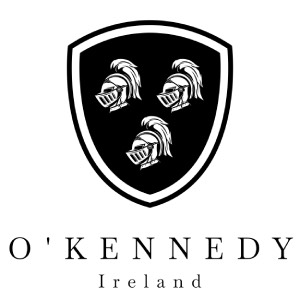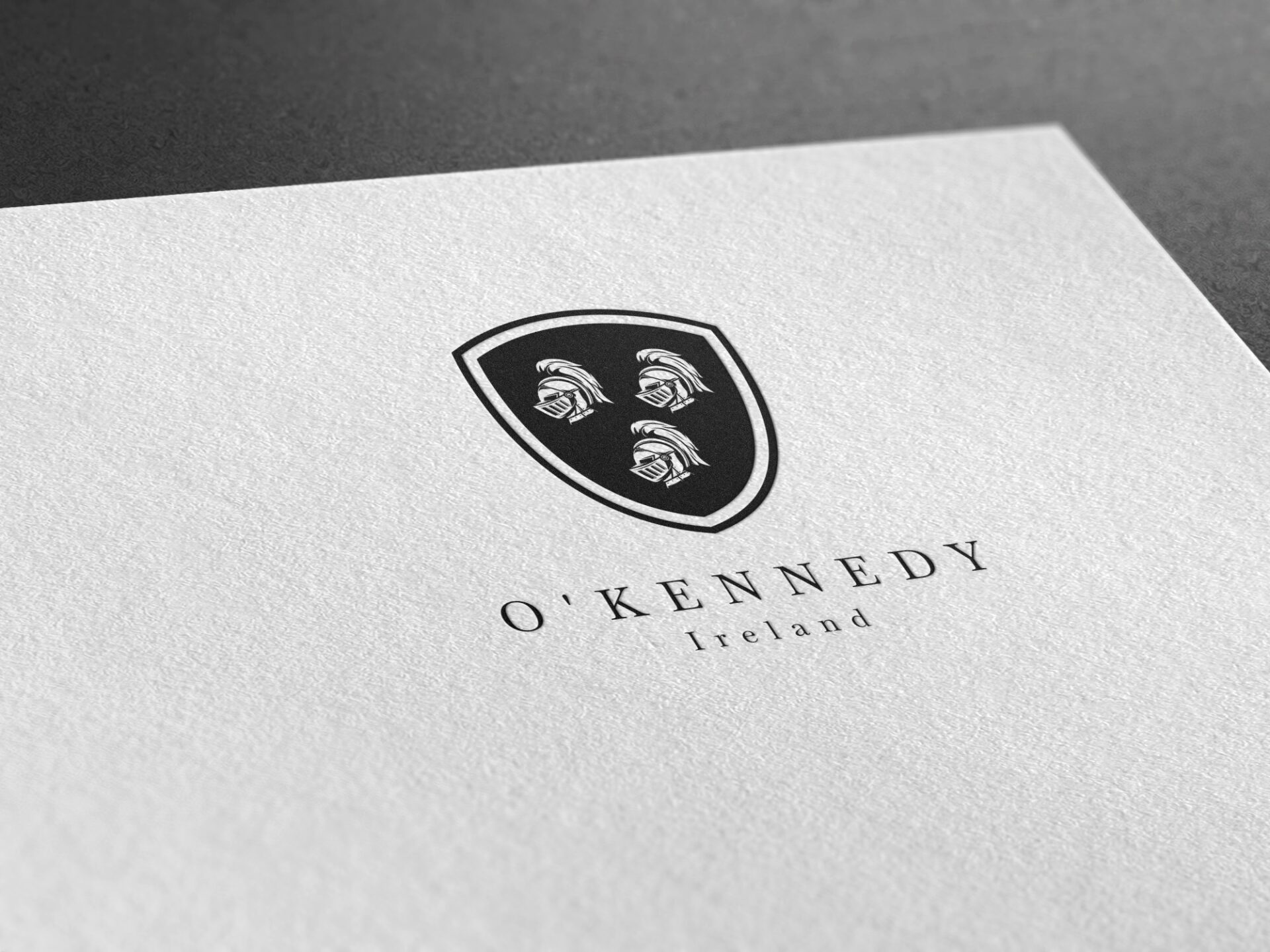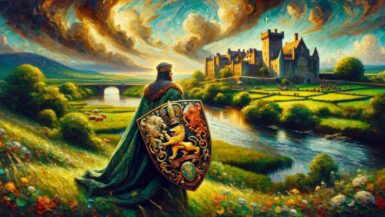The surname O’Kennedy, rooted deeply in Irish heritage, carries a historical resonance that traces back to the early medieval period. Known in Irish as Ó Cinnéide, the name is synonymous with leadership, royal lineage, and a pivotal role in the socio-political landscape of ancient Ireland.
Origins and Etymology
The O’Kennedy name derives from the Gaelic Ó Cinnéide, which translates to “descendant of Cinnéidigh.” The personal name Cinnéidigh is composed of “ceann,” meaning head, and “éide,” often interpreted as helmet or armor. This etymology underscores a connection to warrior status, fitting for a family that would come to hold significant power. The original bearer of the name, Cinnéidigh, was none other than the father of High King Brian Boru, making the O’Kennedys part of the prestigious Dál gCais tribal grouping.
Rise to Power
The O’Kennedys initially settled in the region of Thomond, now modern-day County Clare and parts of Tipperary. Their proximity to the legendary High King Brian Boru tied them to the royal epicenter of Ireland during the 11th century. Although not direct descendants of Brian Boru, the O’Kennedys descended from his brother’s lineage, securing their status among the Gaelic nobility.
Throughout the Middle Ages, the O’Kennedys expanded their influence, eventually establishing themselves as the Lords of Ormond, a title they held from the 11th to the 16th century. Their power base in Ormond, primarily in present-day County Tipperary, was solidified by strategic marriages and alliances, as well as occasional conflicts with neighboring clans and Norman invaders.
Cultural and Political Influence
The O’Kennedy clan was not merely a political force. They were patrons of the arts and the church, with several family members serving as abbots and bishops, notably in the Diocese of Killaloe. Their influence extended into cultural realms, with patronage of Gaelic literature and poetry, maintaining the traditions and linguistic heritage of Ireland during periods of English incursion.
Division and Legacy
The sept eventually divided into three main branches, each led by chiefs distinguished by their hair color: O’Kennedy Donn (brown), O’Kennedy Fionn (blond), and O’Kennedy Rua (red). These branches controlled various territories within Ormond, each maintaining its autonomy yet contributing to the clan’s overarching legacy.
The historical footprint of the O’Kennedy clan is also evident in place names across Tipperary and Clare, such as Killokennedy and Garrykennedy, which attest to their long-standing presence and governance in these regions.
Modern Day and Diaspora
The tumultuous history of Ireland, marked by wars, colonization, and migrations, dispersed many O’Kennedys across the globe, particularly during the 17th century after the Cromwellian conquest of Ireland. Many members of the clan found their way to Europe, serving in military regiments, while others were part of the Irish diaspora in America and other parts of the world.
Today, the surname Kennedy is globally recognized, not least because of the American Kennedys, whose ancestors emigrated from Ireland in the 19th century. While this American branch is not directly descended from the O’Kennedys of Ormond, their shared origins highlight the widespread nature of the Gaelic diaspora.
Family Coat of Arms

The Kennedy family crest of Irish origin is a distinctive and evocative heraldic symbol, deeply rooted in the family’s history and values. The crest features a black background, known as sable in heraldry, which often symbolizes constancy and sometimes grief. The choice of black sets a solemn and resilient tone for the crest, underscoring the family’s enduring strength and determination.
Central to the design of the crest are three knights’ heads. In heraldic terms, the depiction of knights’ heads is a powerful symbol representing chivalry, warrior spirit, and military service. Knights are traditionally associated with honor, protection, and valor, qualities that have evidently been significant throughout the Kennedy family’s history.
The presence of three heads can be symbolic of watchfulness and vigilance, suggesting that the family values not only strength in battle but also the strategic and protective roles of leadership. This could hint at the family’s historical involvement in local or national defense, as well as their commitment to safeguarding their community and upholding justice.






Leave a reply